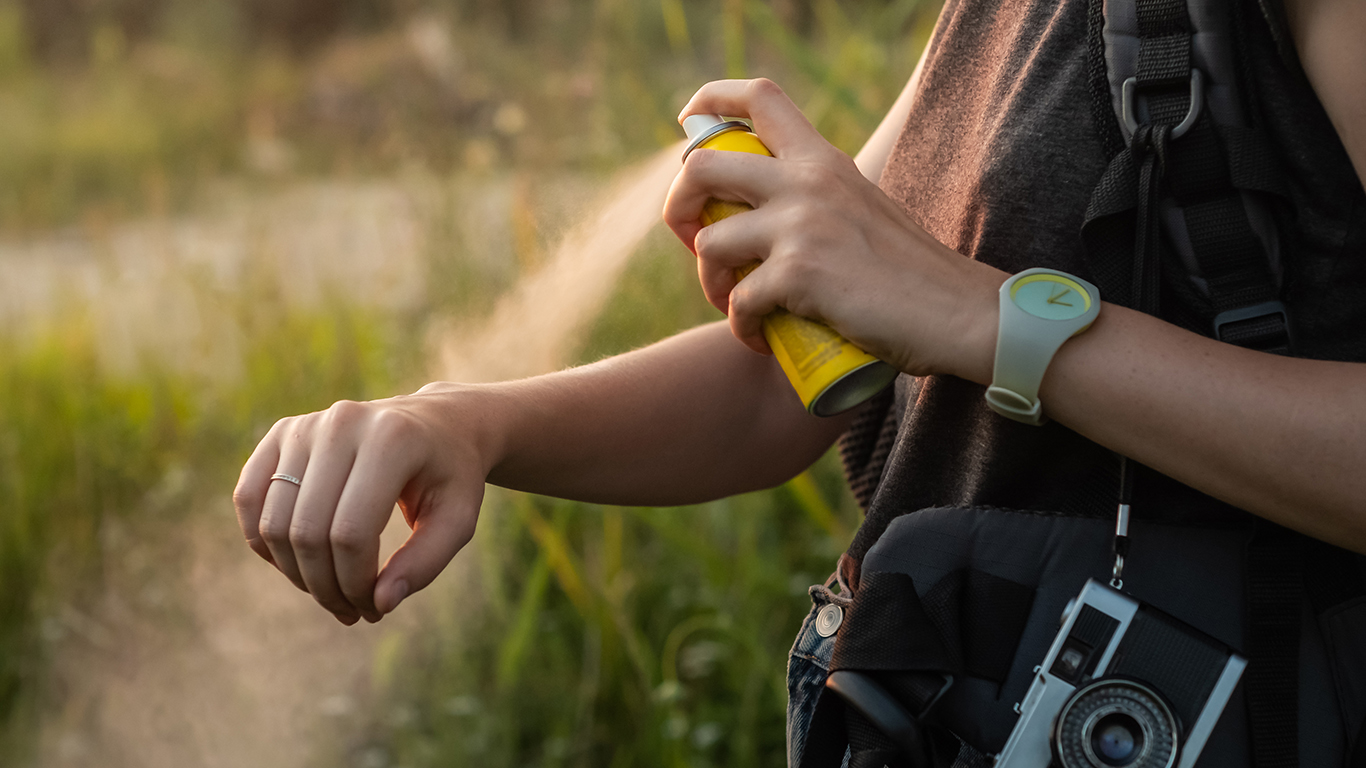
The chirp of crickets. The rhythmic sounds of cicadas. The sudden, intense flicker of lightning bugs. The cute red-and-black ladybugs appearing like bright ornaments on green leaves. Summer magic!
And then there’s the rest of the critters out there. The ones that bite and burrow and sting. These uninvited guests at picnics, on the beach, in the woods, or even the back yard or porch make you long for the great indoors. Insects.
Summertime heat and humidity creates an ideal environment for seasonal bugs, and we’re likely to encounter them as we spend more time outdoors and as warm days turn into long evenings. Our shorts, sleeveless outfits and strappy sandals are exposing plenty of skin for bugs to dine on.
24/7 Tempo reviewed several sources, including the Centers for Disease Control and Prevention as well as the World Health Organization, to bring you a list of bugs you might encounter this summer, and what’s likely to happen if they get too close and personal.
Bug bites are certainly a possible summer health hazard, but it’s not the only one, especially if you don’t know how to protect your body. To find out, check out these biggest health mistakes people make in the summer.
Click here for 15 dangerous bug bites to watch out for this summer

Mosquitoes
Most of the time an itchy, red bump is the only effect you’ll notice from a mosquito bite. There is, however, quite a lengthy list of mosquito-borne illnesses, including West Nile, Zika, malaria, and dengue fever. The bumps from a mosquito bite are actually a small allergic reaction that most, but not all, people have to mosquito saliva. Some people have a more severe reaction, which range from minor (red welts) to serious (hives and fever) to severe (anaphylaxis).
[in-text-ad]
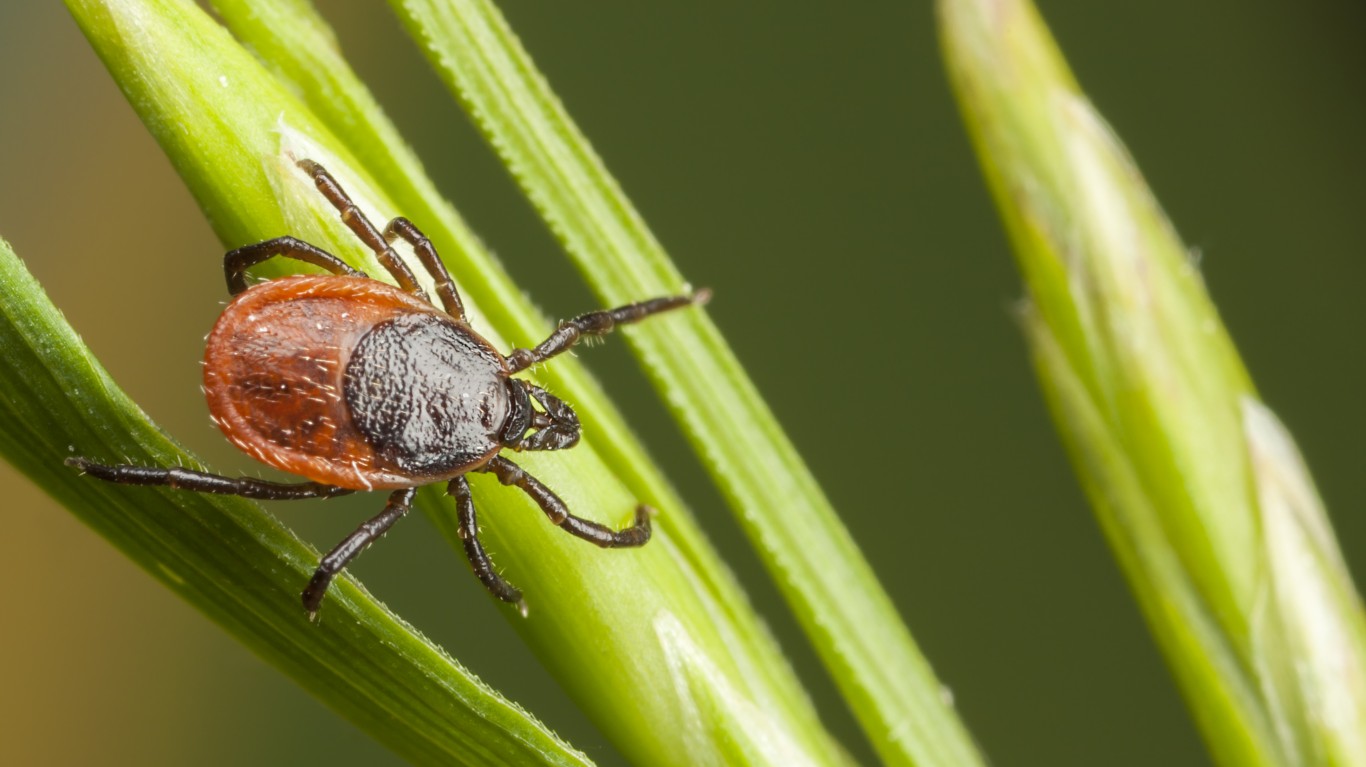
Ticks
Lyme disease gets most of the attention when it comes to tick-borne diseases, but ticks nationwide can carry and spread several other illnesses. Among the pathogens carried by just the blacklegged tick are Lyme disease, anaplasmosis, babesiosis, Borrelia mayonii, Powassan disease, and more. The Tick Act, a bill currently in Congress, could help stop the spread of Lyme and other tick-borne illnesses by funding regional centers that combat vector-borne illnesses and authorizing CDC grants to develop a public health infrastructure to ward off the diseases.

Puss caterpillar
The puss caterpillar may look as soft and pettable as its name suggests, but hands off! This insect’s long, silky-looking hair is actually venomous and can be embedded in the skin just by brushing or pressing against it. The effects of contact with this insect, also known as an asp caterpillar, don’t last long, but they’re no fun. Pain, burning, and rash are the most common. Swelling, respiratory issues, nausea, and headache are also possible.
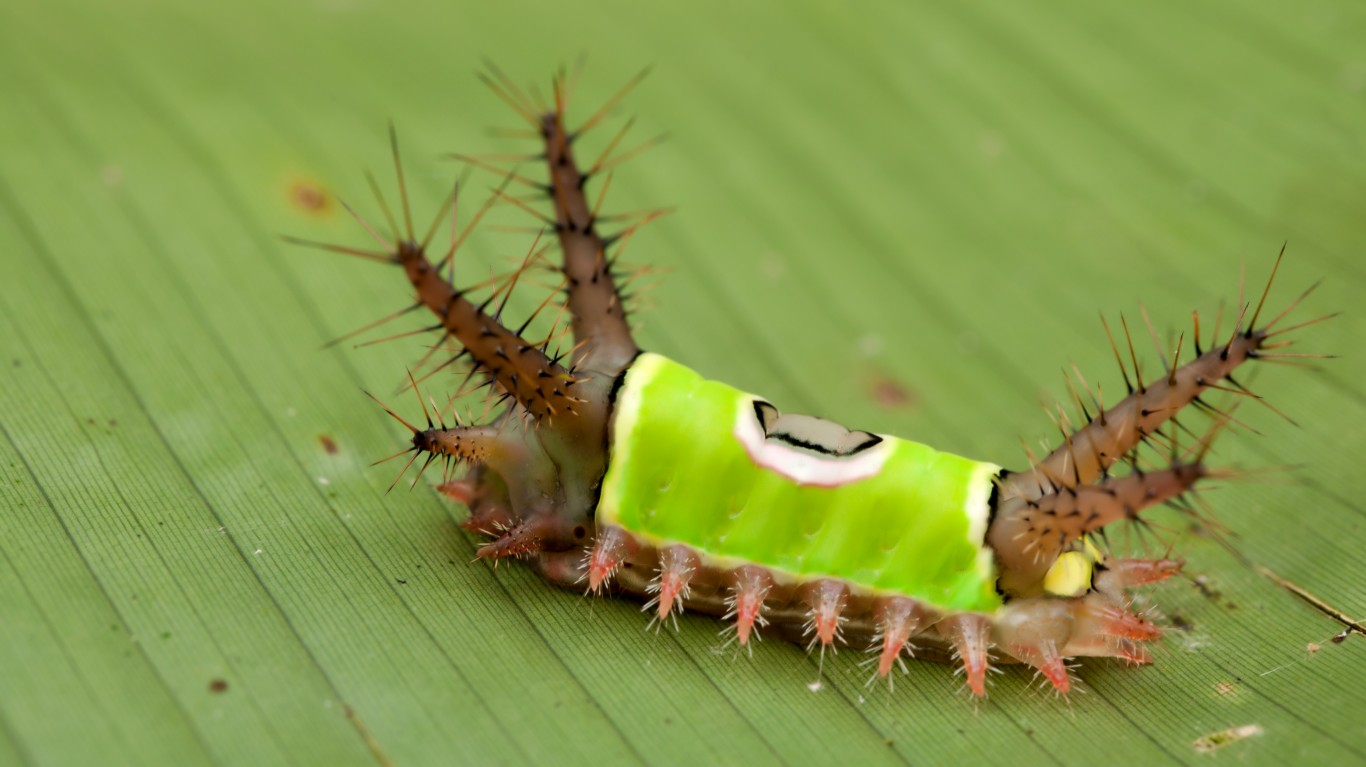
Saddleback caterpillar
The distinctive-looking saddleback caterpillar has four venomous protruding spikes or horns. These spikes can get under your skin, literally. Once embedded, the spines release their venom, causing intense burning sensations. Other possible symptoms include stomach issues, migraine, and anaphylactic shock.
[in-text-ad-2]

Bees
Bee stings are no fun, but most people can shrug off a single one with no more than minor discomfort that includes pain, redness, and a bit of swelling. But for the estimated 5% of the population with insect sting allergies, or anyone stung more than a dozen times, the stakes are higher and potentially life threatening. Hives, swollen throat and tongue, breathing problems, nausea, dizziness, and fainting could be among the symptoms. In rare cases, bee stings can be fatal.
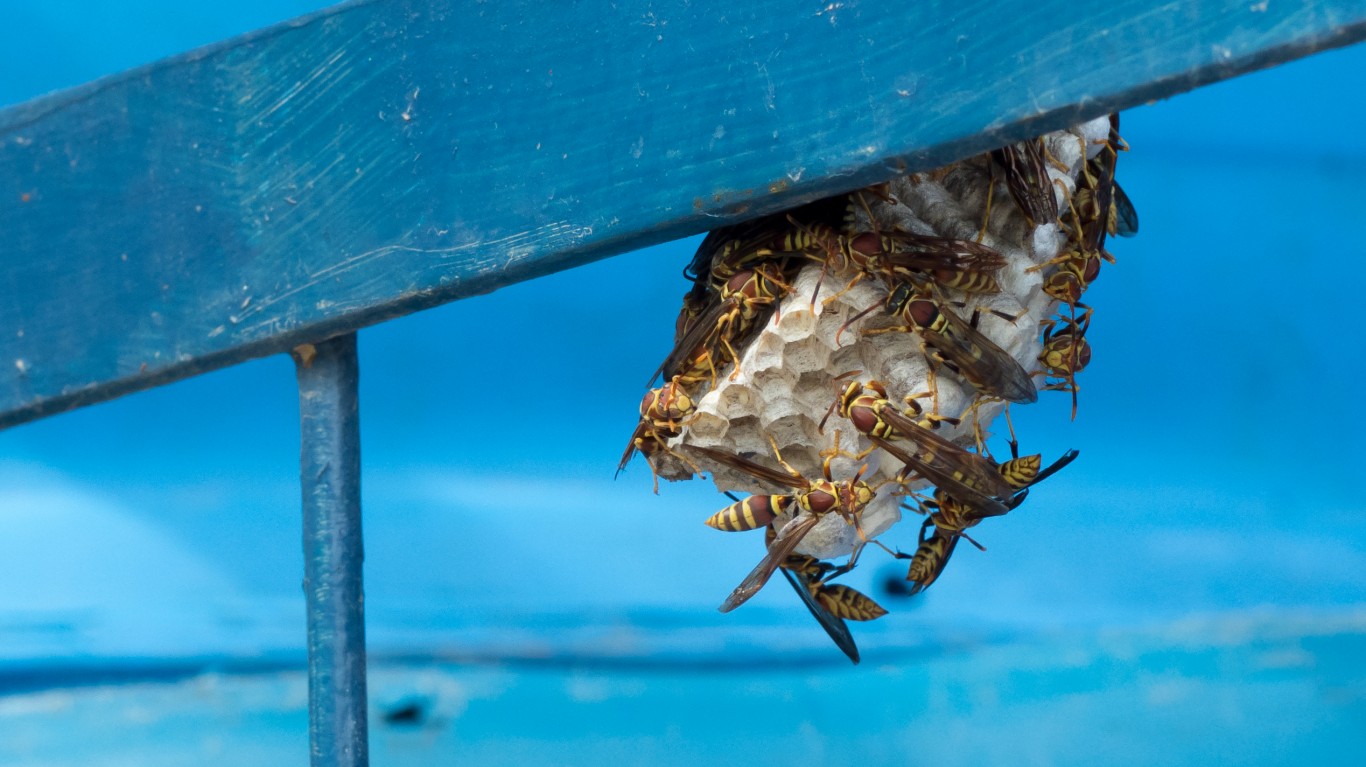
Wasps, hornets, yellow jackets
Their stings and the resulting symptoms are very similar to those of bees. For most people, they are not a problem beyond the immediate painful sting sensation and possibly some lingering redness and swelling at the site of the sting. Hives, swollen throat and tongue, breathing problems, nausea, dizziness and fainting, and more could be among the symptoms among the 5% of the population with allergies to insect stings or for anyone stung multiple times. Bees and wasps are different in one key aspect, however — each bee can only sting once, but the same wasp can strike multiple times.
[in-text-ad]
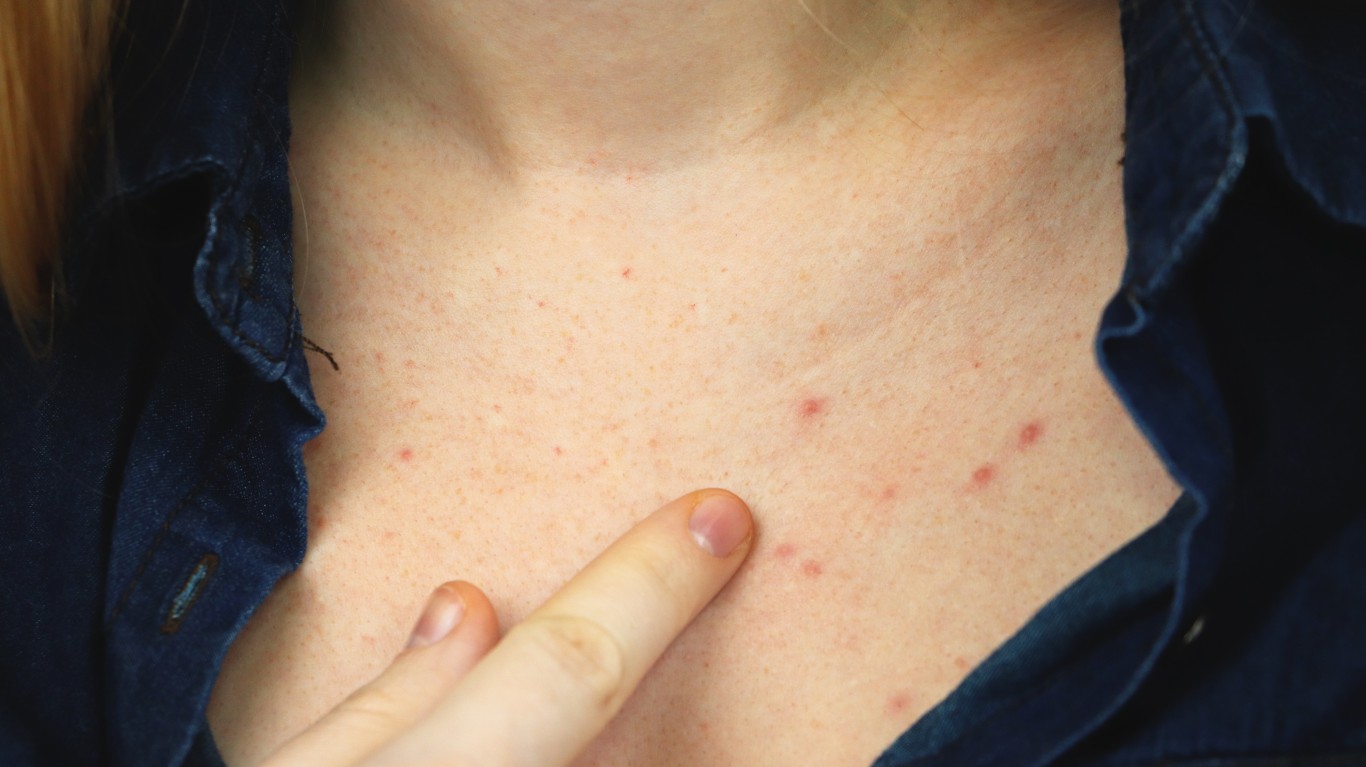
Scabies
Scabies is a skin infestation caused by tiny mites, and the condition’s symptoms are easily confused with eczema or dermatitis. Scabies mites burrow under the skin, causing bumpy, itchy patches. The bad news is that it can take up to six weeks after exposure to the mites for the signs to develop, and unlike conditions such as dermatitis and eczema, scabies can spread and be contagious, including during that dormant period before the onset of itching or rash.

Spiders
Dangerous spiders loom large in our imaginations, but maybe it’s because we’ve all seen too many movies featuring villainous arachnids. In reality, only two — the famed black widow and brown recluse — are likely to cause health issues with their bites, and that doesn’t happen very often. Reactions to bites from black widows can can include severe pain, while brown recluse bites can give victims decaying ulcers. If the person who was bitten is having trouble breathing, is experiencing severe pain or abdominal cramping, or if the ulcer at the bite site is growing, he or she should go to the doctor. Wolf spiders are often mistaken for brown recluses, but while the wolf’s bite can sting a bit, it’s unlikely to cause major problems.
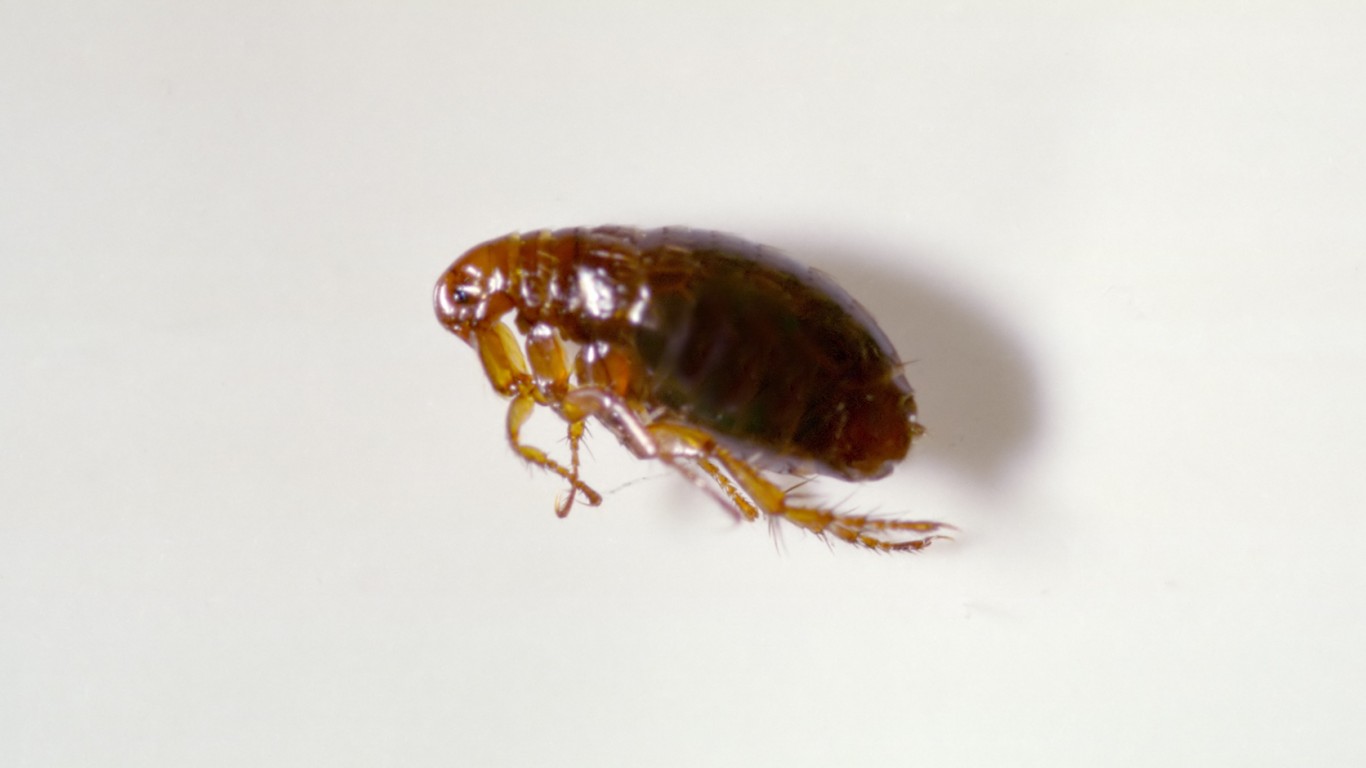
Fleas
Most flea infestations in humans are relatively benign. The worst symptoms are generally uncomfortable itching and skin irritation. But some flea issues, if left untreated, can cause secondary infections that can lead to gangrene and tetanus. Flea-borne diseases are extremely uncommon among humans.
[in-text-ad-2]
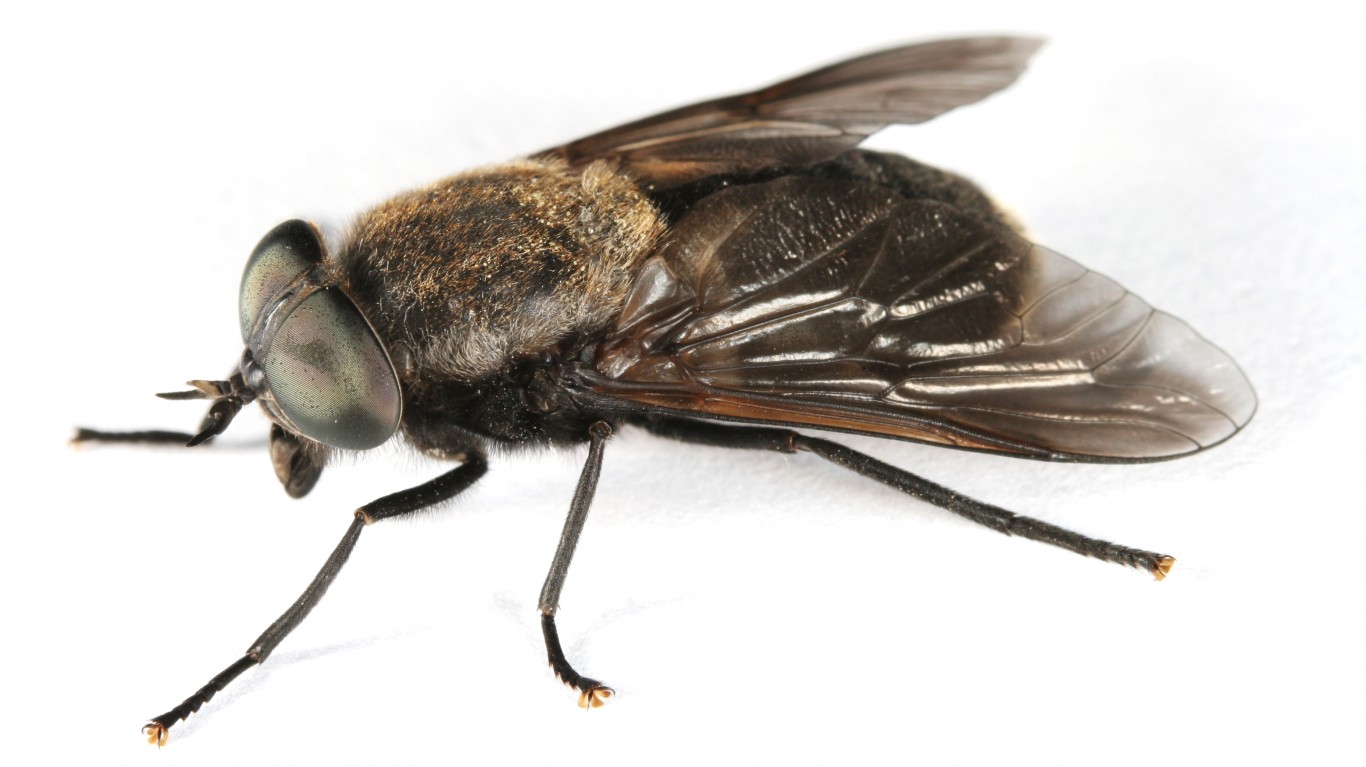
Horse flies
There’s no mistaking a horse fly bite. For starters, the bugs are pretty big, so you’re likely to see them in action. Unless they’re on super-stealth attack mode — as in, they strike when you’re asleep — you can probably shoo them off. If you’re not so lucky, horse fly bites are painful but they don’t typically cause any serious harm to humans and heal on their own in a day or two.

Deer flies
Deer flies have a painful bite, similar to that of a horse fly. Usually, that’s the extent of the havoc they wreak. It’s possible, however, to have an allergic response triggered by the fly’s saliva. Symptoms may include hives, vomiting, and breathing difficulty. In rare cases, a deer fly bite can transmit tularemia — also known as rabbit fever or deer fly fever. Fever, sores, and swollen glands are among the symptoms. The infection can spread and affect the heart, lungs, bones, and more.
[in-text-ad]
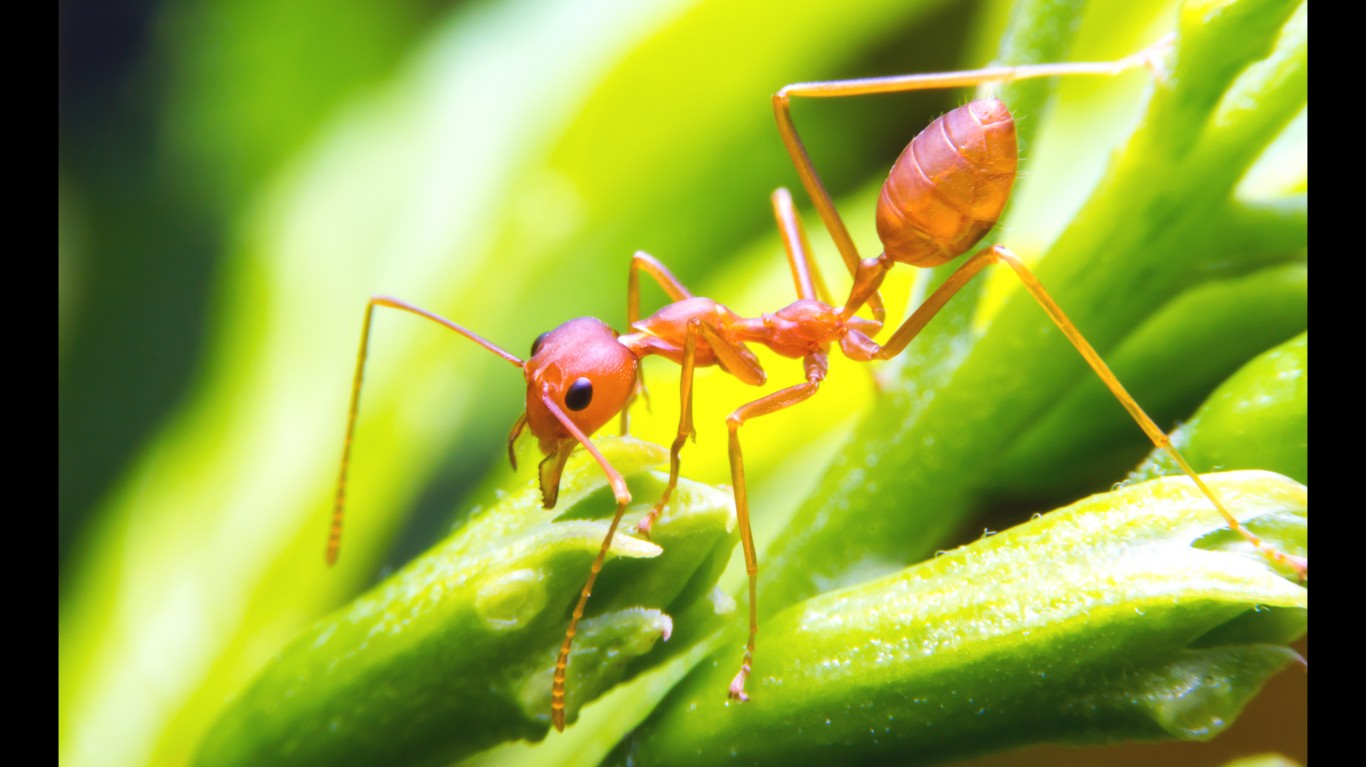
Fire ants
Stinging, itching, burning, redness, and swelling are among the instant effects of fire ant bites. Blistering comes next, sometimes followed by infection. People who are allergic to bee or wasp stings are also likely to have a strong reaction to fire ants, especially when multiple bites are involved. Sweating, nausea, shortness of breath, swelling, and slurred speech are possible reactions.

Chiggers
Chiggers are among the most common biting mites. They don’t burrow beneath the skin, and once the tiny critters bite, they fall off. An itchy rash often follows at the site of the bite, usually healing within a week or two.

Sand or Chigoe fleas
Chigoe fleas — known better as sand or beach fleas — are mites that burrow into the skin, causing itching and irritation. They usually attack the feet, where lesions may eventually form and may be followed by infection and abscesses. Embedded sand fleas require treatment by a doctor to ensure that tungiasis, a skin infection, has not been transmitted.
[in-text-ad-2]
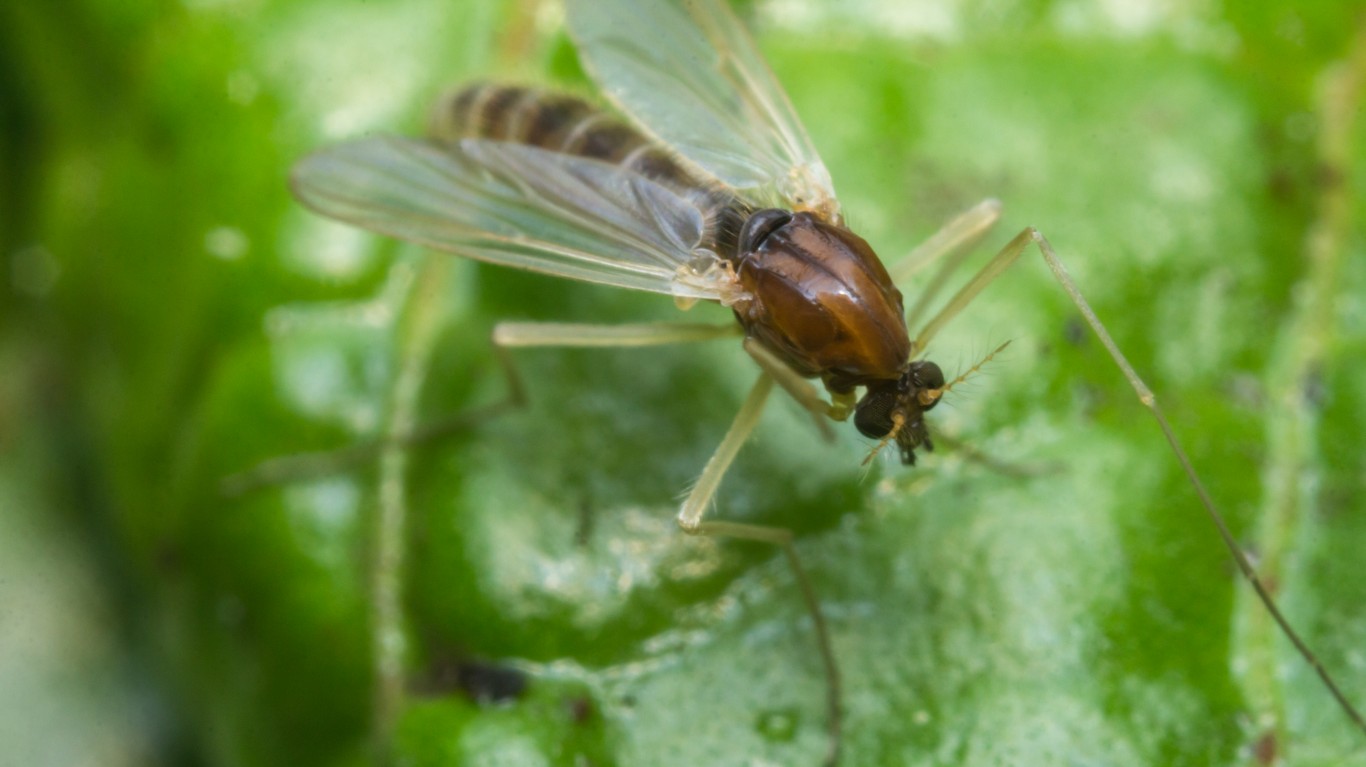
Sand flies
Unlike the similarly named fellow insects sand fleas, sand flies can deliver a painful bite that may cause a bump or blister. The winged insects, sometimes known as no-see-ums, are pesky, but the symptoms usually fade within days. It’s possible for infected bites to lead to an infection called leishmaniasis, which result in skin sores. Thankfully, this is quite rare.
Is Your Money Earning the Best Possible Rate? (Sponsor)
Let’s face it: If your money is just sitting in a checking account, you’re losing value every single day. With most checking accounts offering little to no interest, the cash you worked so hard to save is gradually being eroded by inflation.
However, by moving that money into a high-yield savings account, you can put your cash to work, growing steadily with little to no effort on your part. In just a few clicks, you can set up a high-yield savings account and start earning interest immediately.
There are plenty of reputable banks and online platforms that offer competitive rates, and many of them come with zero fees and no minimum balance requirements. Click here to see if you’re earning the best possible rate on your money!
Thank you for reading! Have some feedback for us?
Contact the 24/7 Wall St. editorial team.
 24/7 Wall St.
24/7 Wall St.